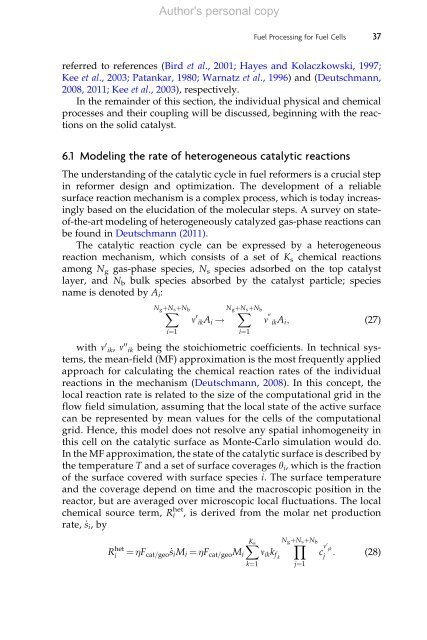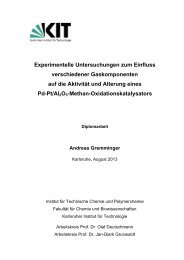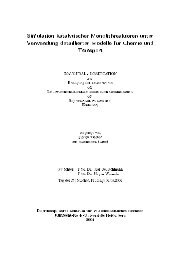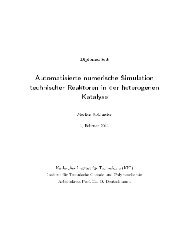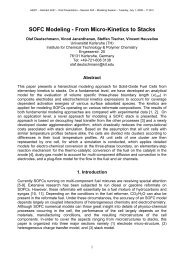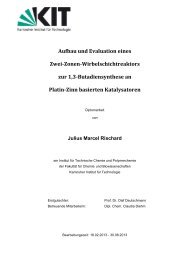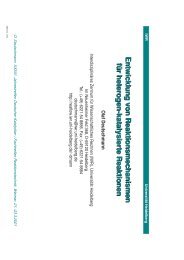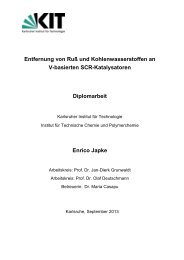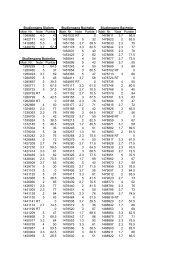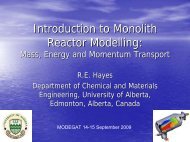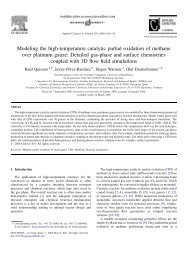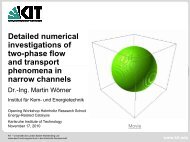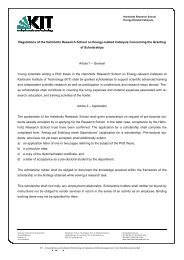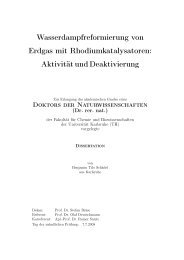Fuel Processing for Fuel Cells - Institut für Technische Chemie und ...
Fuel Processing for Fuel Cells - Institut für Technische Chemie und ...
Fuel Processing for Fuel Cells - Institut für Technische Chemie und ...
Create successful ePaper yourself
Turn your PDF publications into a flip-book with our unique Google optimized e-Paper software.
Author's personal copy<br />
<strong>Fuel</strong> <strong>Processing</strong> <strong>for</strong> <strong>Fuel</strong> <strong>Cells</strong> 37<br />
referred to references (Bird et al., 2001; Hayes and Kolaczkowski, 1997;<br />
Kee et al., 2003; Patankar, 1980; Warnatz et al., 1996) and (Deutschmann,<br />
2008, 2011; Kee et al., 2003), respectively.<br />
In the remainder of this section, the individual physical and chemical<br />
processes and their coupling will be discussed, beginning with the reactions<br />
on the solid catalyst.<br />
6.1 Modeling the rate of heterogeneous catalytic reactions<br />
The <strong>und</strong>erstanding of the catalytic cycle in fuel re<strong>for</strong>mers is a crucial step<br />
in re<strong>for</strong>mer design and optimization. The development of a reliable<br />
surface reaction mechanism is a complex process, which is today increasingly<br />
based on the elucidation of the molecular steps. A survey on stateof-the-art<br />
modeling of heterogeneously catalyzed gas-phase reactions can<br />
be fo<strong>und</strong> in Deutschmann (2011).<br />
The catalytic reaction cycle can be expressed by a heterogeneous<br />
reaction mechanism, which consists of a set of K s chemical reactions<br />
among N g gas-phase species, N s species adsorbed on the top catalyst<br />
layer, and N b bulk species absorbed by the catalyst particle; species<br />
name is denoted by A i :<br />
N g þN<br />
X s þN b<br />
i¼1<br />
n 0 ikA i !<br />
N gþN X s þN b<br />
i¼1<br />
n 00 ikA i ; (27)<br />
with n 0 ik, n 00 ik being the stoichiometric coefficients. In technical systems,<br />
the mean-field (MF) approximation is the most frequently applied<br />
approach <strong>for</strong> calculating the chemical reaction rates of the individual<br />
reactions in the mechanism (Deutschmann, 2008). In this concept, the<br />
local reaction rate is related to the size of the computational grid in the<br />
flow field simulation, assuming that the local state of the active surface<br />
can be represented by mean values <strong>for</strong> the cells of the computational<br />
grid. Hence, this model does not resolve any spatial inhomogeneity in<br />
this cell on the catalytic surface as Monte-Carlo simulation would do.<br />
In the MF approximation, the state of the catalytic surface is described by<br />
the temperature T and a set of surface coverages y i , which is the fraction<br />
of the surface covered with surface species i. The surface temperature<br />
and the coverage depend on time and the macroscopic position in the<br />
reactor, but are averaged over microscopic local fluctuations. The local<br />
chemical source term, R i het , is derived from the molar net production<br />
rate, _s i ,by<br />
X K<br />
R het<br />
s<br />
i ¼ F cat=geo _s i M i ¼ F cat=geo M i<br />
k¼1<br />
n ik k f k<br />
N gþN<br />
Y s þN b<br />
j¼1<br />
c n0 jk<br />
j<br />
: (28)


